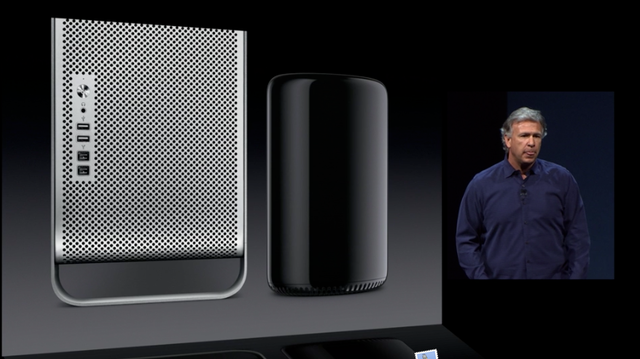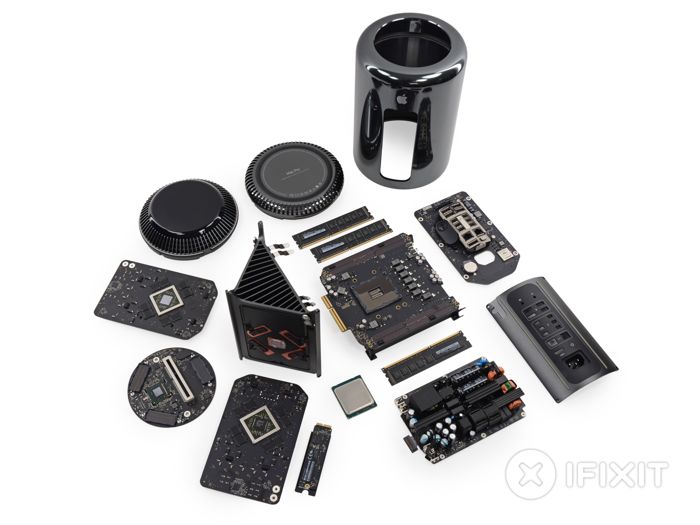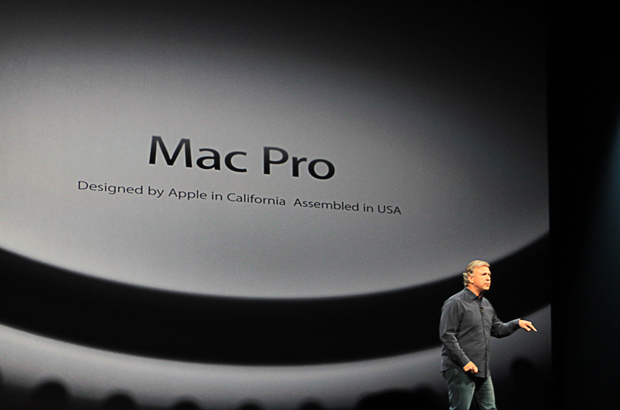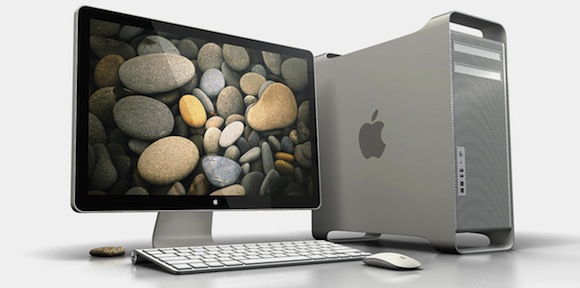
Apple SVP for Marketing on the 2018 Mac Pros under development-““We’re working on it,” says Schiller. “We have a team working hard on it right now, and we want to architect it so that we can keep it fresh with regular improvements.”
By Gadjo Cardenas Sevilla
Never has an Apple product line been as contentious as the current generation of Mac Pro desktops. With the outcry of pro-users who haven’t seen an update in these flagship Macs since 2013, the company recently took to rounding up handpicked reporters and bloggers to explain the situation, as well as promise that they’re working on various solutions.
Apple launched the Mac Pro in 2013, and while that machine had great specs at that time, its cylindrical design and integrated architecture made it nearly impossible to upgrade. As a result the Mac Pro line has remained unchanged in terms of specs and pricing, until yesterday.
The current Mac Pros are getting mild spec update. Apple is also ramping up new iMacs that might appeal to professional users. The best news is that completely new Mac Pros, with all the performance and expansion that pro users require, are on the way. Apple is even making new Pro Displays to accompany these Mac Pros.
The caveat, new Mac Pros and the displays, however, aren’t coming this year.
Macs vs. Apple’s other products

If you look at Apple’s product lines and see the iPhone, iPad and even the MacBooks, they’ve continuously made them slimmer and lighter but at the expense of less expansion and no user-serviceable options. If you buy an iPhone or an iPad, you’d better choose the best configuration you can afford, since it is impossible to add storage or or more RAM later on.
This is true even for MacBooks and iMacs, which are nearly impossible to upgrade once they’re shipped out of the factory. Most users are fine with this reality. Get the best specs you can afford and live with that configuration for the life of the device.
Mac Pros, however, exist on the opposite plane. Ever since Apple offered pro-level Macs, they’ve always been designed for expansion, easy upgrades and the capacity to take on newer components like graphics cards, processors, storage and others. Going slimmer, smaller and with less expansion doesn’t work in the pro market, so this is why the Mac Pro Apple’s been selling since 2013 has remained in stasis since it launched.
Rethinking the modern desktop

I firmly believe Apple would much rather drop the Mac Pro altogether and focus on the iMac, MacBook and iPhones and iPads.
It shelved its server line, it retired its various networking accessories, and even has the once profitable iPod line in a holding pattern. Ditto for the Mac mini line of diminutive desktops which now look archaic sitting next to some of the mini PC offerings from rival companies.
Apple has realized that they need to continue creating pro-level desktops, not just as cool proof of concept statements that they are still innovators, but because serious and loyal customers rely on these machines for their livelihood. We can argue about what is pro and not, point at the 4K and 5K iMacs and say they’re good enough, but there’s a subset of creatives that require expansion and the ability to run the most powerful graphics and processing chips.
The new Mac Pros don’t just need to be able to edit 4K video (we now have 360′ degree videos in 4K produced from consumer cameras. There’s a whole slew of VR (Virtual Reality) and AR (Augmented Reality) applications, not to mention video games which the Mac has traditionally been poor platform to run more demanding titles.
So, the thinking that applies to Apple’s other products, (thinner, lighter, less parts) is the exact opposite of what’s required for Mac Pros which need to be modular, easy to upgrade and service, and should allow for standard graphics and processor cards to be swapped as needed (not to mention have a wide selection of I/O for video and audio-input, without the need for costly and unsightly dongles).
A world without Mac Pros

While many loyal Apple customers will likely wait and spend a lot of money when the new Mac Pros arrive, there’s an opportunity for competitors to woo these disgruntled and misplaced customers away from Apple.
Microsoft and HP are already getting a lot of business from so-called creatives thanks to innovative twists on their flagship desktops.
Desperate Mac Pro users have built hackintoshes, which use PC components and fool them to run macOS in order for them to be able to run their software on relatively new hardware. This is possible because Macs have been running on Intel processors for over a decade now. More ardent Mac Pro users (such as myself), are simply preserving their older hardware and the software in perpetuity for as long as they get the job done, even if they’re near obsolete.
Conclusion
The Mac Pro debacle has definitely been a stone in Apple’s shoe for some time now. It has forced the company, and its executives, to resort to unheard of things. Like gathering a small group of their chosen journalists to spread the gospel of a promised Mac Pro, or discuss plans for upcoming products and forward-facing strategies to appease disgruntled customers.
As uncharacteristic as these moves are, at least Apple is acknowledging the issue and offering both short and long-term solutions. Now, whether customers are willing to wait for what’s next, will determine whether the Mac Pro regains its stature with its designated user base.



